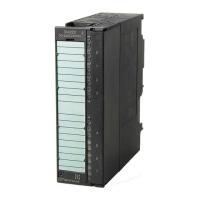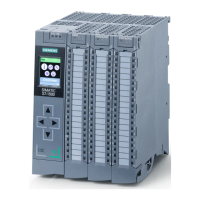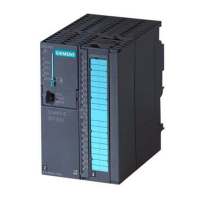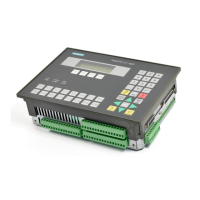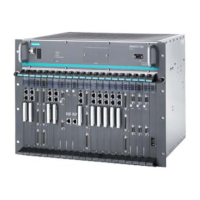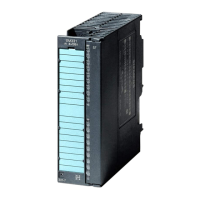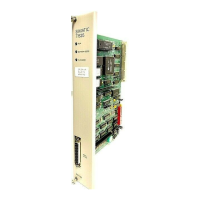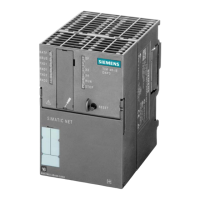Failure and Replacement of Components During Operation
10-9
Automation System S7-400H Fault-tolerant Systems
A5E00068197-07
Step How Does the System React?What Has To Be Done?
7 If in step 6 the standby CPU has gone
to STOP:
Extract the synchronization submodule
from the master CPU.
• Master CPU executes
insert/remove-module interrupt
OB 83 and redundancy error
OB 72 (incoming).
8 Plug the new synchronization
submodule into the master CPU. Make
sure the rack number is set correctly.
• Master CPU executes
insert/remove-module interrupt
OB 83 and redundancy error
OB 72 (outgoing).
9 Plug in the fiber-optic cable connections
of the synchronization submodules.
-
10 Start the standby CPU (e.g.
STOP³RUN or Start via programming
device).
• CPU performs automatic LINK-UP
and UPDATE.
• CPU changes to RUN (Redundant
system mode) and now operates
as the standby CPU.
1 The CPU displays by means of LEDs and by means of the diagnosis whether the lower or
upper redundant link has failed. After the defective parts (fiber-optic cable or
synchronization submodule) have been replaced, LEDs IFM1F and IFM2F go out. Not until
then can you perform the next step.
Note
If both fiber-optic cables or synchronization submodules are successively
damaged or replaced the system reactions are the same as described above.
The only exception is that the standby CPU does not go to STOP mode but
instead requests a reset.
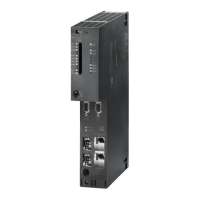
